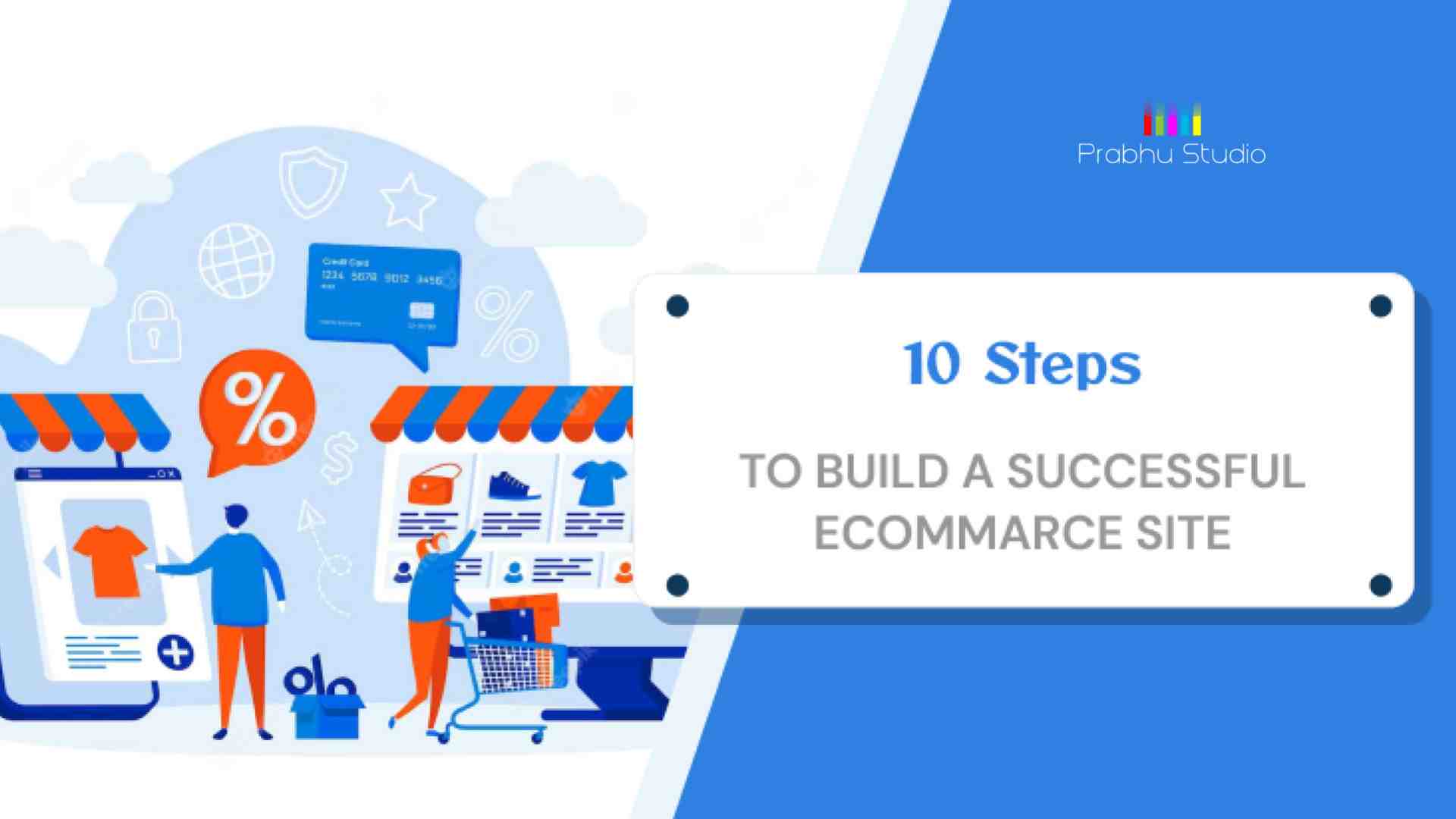
In today's digital age, the internet has become an essential part of our daily lives. E-commerce is booming, and more businesses are shifting towards online selling to reach a wider audience. However, building a successful e-commerce website is not an easy task. In this blog, we will discuss ten essential steps that will help you build a successful e-commerce website.
1. Define Your Target Audience:
Before you start building your e-commerce website, it is crucial to define your target audience. This will help you create a website that caters to their needs and preferences, leading to higher conversions and customer loyalty.
To define your target audience, conduct market research to understand their demographics, behaviors, and preferences. Identify their pain points and how your product or service can solve them. This will help you tailor your messaging and design to appeal to your target audience.
2. Choose a Domain Name and Hosting:
Choosing the right domain name and hosting service is crucial for your e-commerce website's success. Your domain name should be memorable, easy to spell, and relevant to your brand. It should also be unique and not infringe on any existing trademarks.
When it comes to hosting, choose a reliable and secure service provider. Your website should load fast, be available 24/7, and have adequate bandwidth to handle traffic spikes.
3. Choose an E-commerce Platform:
Choosing the right e-commerce platform is essential to building a successful e-commerce website. Consider factors such as pricing, features, ease of use, scalability, and integrations with other software.
Shopify, Magento, WooCommerce, and BigCommerce are some of the most popular e-commerce platforms available. Choose a platform that suits your needs and budget.
4. Design Your Website:
The design of your e-commerce website plays a significant role in creating a positive user experience. Your website should be visually appealing, easy to navigate, and mobile-friendly.
Choose a design that aligns with your brand and appeals to your target audience. Use high-quality images, clear calls-to-action, and easy-to-read fonts. Ensure that your website's design is consistent across all pages.
5. Create High-Quality Product Pages:
Your product pages are where you showcase your products and convince customers to buy them. To create high-quality product pages, include high-quality images, detailed descriptions, and customer reviews.
Ensure that your product pages have clear pricing information, shipping details, and add-to-cart buttons. Use product videos and 360-degree images to give customers a better idea of your products.
6. Optimize Your Website for Search Engines:
Optimizing your e-commerce website for search engines is essential to attract organic traffic. Conduct keyword research to identify relevant keywords and phrases that your target audience uses. Use these keywords in your website's meta tags, headings, and URLs.
Create relevant and high-quality content that appeals to your target audience. Use internal linking to improve website navigation and crawlability. Ensure that your website is mobile-friendly and loads quickly.
7. Secure Your Website:
Security is a top priority for e-commerce websites. Ensure that your website is secure by using an SSL certificate to encrypt customer data. Use strong passwords for all accounts and regularly update your software to prevent security vulnerabilities.
Implement two-factor authentication and limit access to sensitive information. Use reputable payment gateways to process transactions securely.
8. Offer Multiple Payment Options:
Offering multiple payment options is essential to provide convenience to your customers. Accept credit and debit cards, PayPal, Apple Pay, and other popular payment methods.
Ensure that your payment process is secure and easy to use. Provide customers with clear pricing information and any applicable taxes or fees.
9. Set Up Shipping and Delivery:
Setting up shipping and delivery options is crucial for your e-commerce website's success. Provide customers with real-time shipping updates and tracking information. Use reliable shipping carriers that offer affordable rates and fast delivery times.
Offer free shipping for orders above a certain amount to incentivize customers to buy more. Provide customers with a clear return policy and customer support to handle any issues that may arise.
10. Test and Refine Your Website:
Regularly testing and refining your e-commerce website is crucial to improving user experience and increasing conversions.
Use A/B testing to test different versions of your website and measure which performs better. Test different headlines, calls-to-action, and product descriptions to optimize conversions.
Analyze website traffic and sales data to identify areas for improvement. Use tools such as Google Analytics and heat maps to understand user behavior and identify areas of the website that may be causing friction.
Regularly update your website's content and offerings to keep customers engaged and interested. Offer promotions and discounts to incentivize repeat purchases and encourage customer loyalty.
Conclusion
In conclusion, building a successful e-commerce website development requires careful planning, attention to detail, and continuous refinement. By following these ten steps, you can create a website that provides a positive user experience, attracts organic traffic, and converts visitors into loyal customers. Remember to prioritize security, offer multiple payment and shipping options, and regularly test and refine your website to stay ahead of the competition.
Read more
